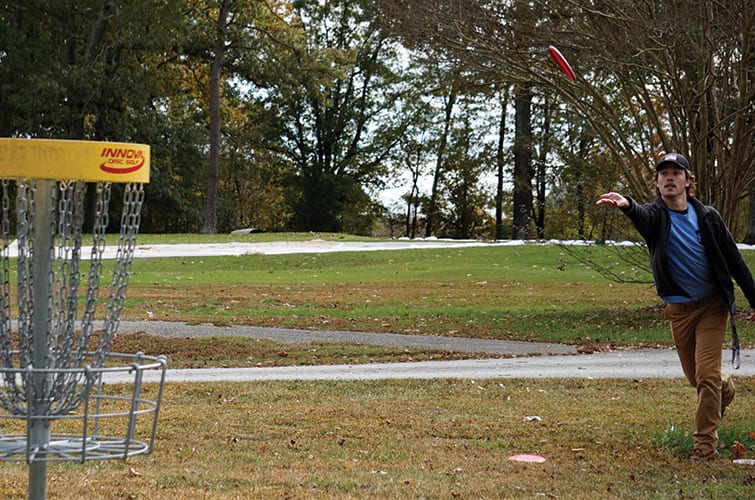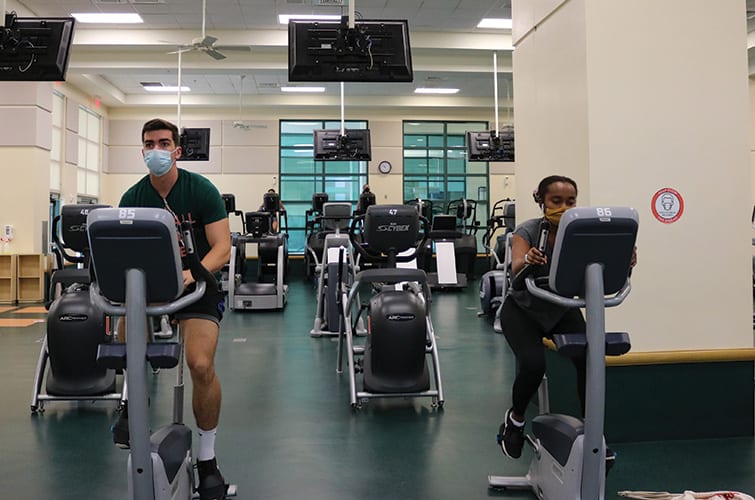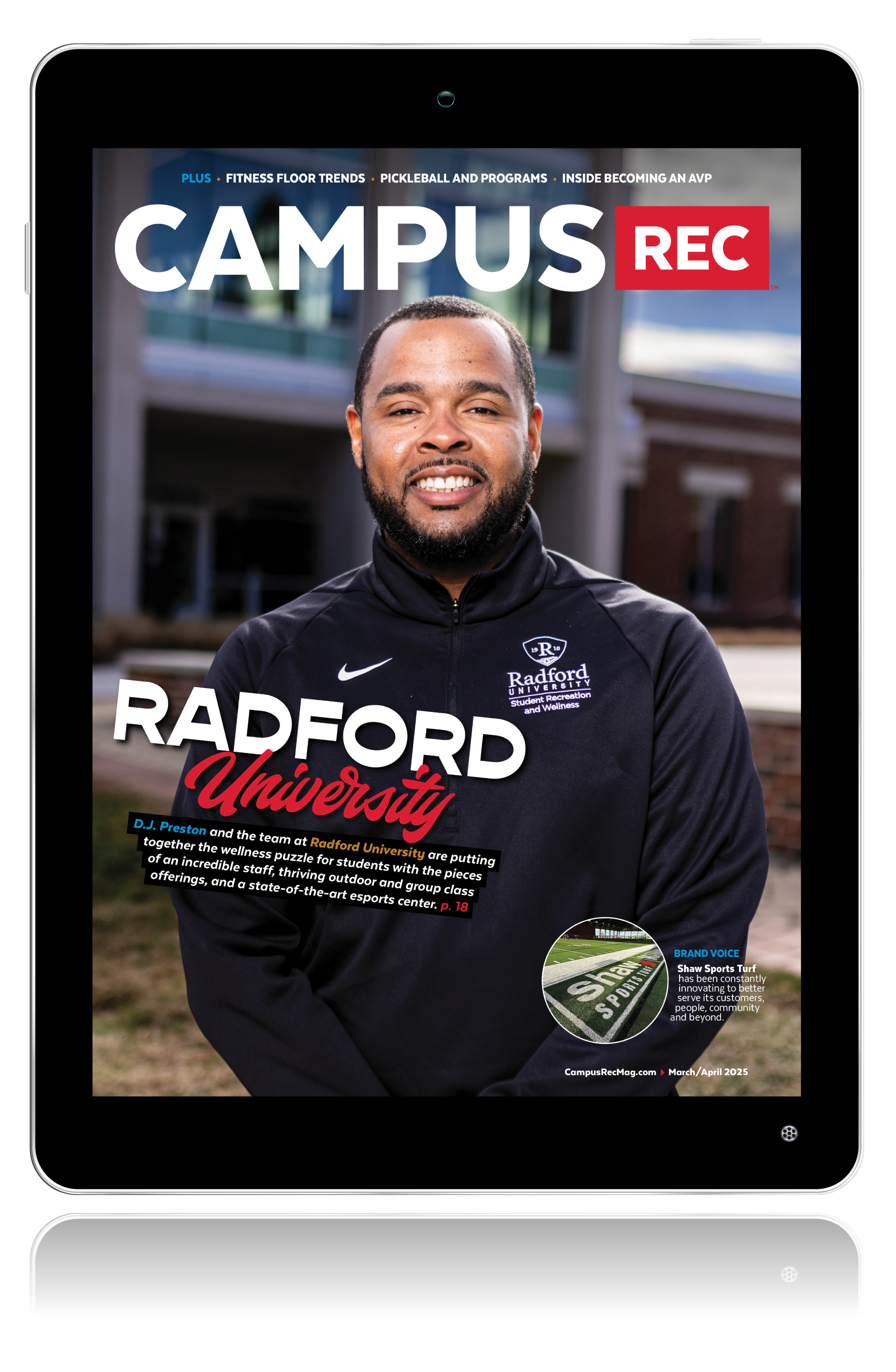A key aspect to managing fitness program trends is to stay up-to-date on what’s most popular among your specific community.
Recently added to these requirements is now assessing the safety of each program. Below, three schools share how they are staying in the loop and offering fitness programs safely. They also dive into what’s most popular now and predictions for fitness program trends throughout the year.
Staying in the Know
At the University of Missouri, Stephen Byrd, the director of Recreational Services, said the industry has been wonderful in terms of networking and sharing information, especially when it initially came to developing strategies to operate during a pandemic that no school was truly prepared for.
“The array of periodic, scheduled meetings between colleagues at different institutions, the e-discussion boards, and even the virtual regional and national conferences have all been paramount,” said Byrd. “These methods of connecting allow university recreation professionals to continue to discuss best practices and strategies for dealing with changing student demographics and their habits.”
Gus Hemmer, the associate director of Campus Recreation at Longwood University, agreed and said resources like Campus Rec Magazine and NIRSA workshops, webinars and roundtables helped give nationwide views and solutions. However, other schools have also found simply asking the community to be the best way to stay in the know.
“Program participation and feedback, in many forms, dictates program decisions,” said Scott Levin, the executive director of Wellness and Recreation at the University of Miami. “Our students will openly let us know what they like and what they don’t.”
What’s Popular Now?
At the University of Miami, Levin said participants have become more deliberate with their time in the facility. They show up, getting their workout in and getting out. Due to county, state and university mandates, some areas of the facility are not currently available. Many participants are flocking to the fitness area, with plate-loaded free weights being most popular.
“The free-weight area has been popular and the majority of all daily users make a direct turn once through the door to the fitness area,” said Levin.
With a lack of team sport options in fitness programming over the past year — which is usually the most popular program offered at the University of Missouri — Byrd said the goal this year is more about student safety.
EXTRA CREDIT: Check out the top fitness trends of 2021 as noted by ACSM.
“The programming options made available this year are much more determined by what can be safely provided than by the popularity of any specific program,” he said. “In a typical year, some of our programs, such as basketball, flag football, soccer and sand volleyball, would be among our most popular programs. This year, within the group exercise area, cycling, Zumba, and strength and conditioning classes have been the most popular.”
Similar to programming assessment at Missouri, Hemmer said Longwood is looking at the risk of transmission in their most popular programs and working to find ways to reduce contact, number of participants and shared equipment, and increase distancing and mask use. “We had to completely stop offering popular programs, such as informal pick-up basketball, due to our inability to ensure compliance with state standards,” he said.

Not to be forgotten, another option that has made its way to the forefront of fitness safety is outdoor programming. At Longwood, the 18-hole disc golf course has shown a large increase in usage. “In the past we saw spotty use,” said Hemmer. “Now, not a day goes by when the course isn’t being used by students, faculty and staff, and community members. Afternoons and weekends see a dozen cars or more in the parking area.”
o further ensure safety, Longwood staff posted the CDC recommendations, such as wear a mask, maintain distance, wash hands, etc., on the disc golf information kiosk and have made sure to clean rental discs before reissuing them. “Participants have really flocked to the course because it is such a positive way to stay active and safe, compared to contact and team sports,” said Hemmer. “To be able to spend time outside alone or with a few distanced friends has been a great relief to those feeling shut in by the pandemic.”
Future Predictions of Fitness Program Trends
Because disc golf has excelled so much, Hemmer predicts more socially-distanced outdoor offerings to gain attention in the next year. Some of the popular outdoor club offerings at Longwood include s’mores campfires, night hikes at the High Bridge State Park, stargazing and slacklining.
“Another growth area is virtual fitness classes that can be done equipment-free,” said Hemmer. “Virtual fitness has two noticeable perks: students can join right from their residence hall and if an instructor has to cancel, we can offer a prerecorded class.”
At Miami, in the post-COVID world Levin said he believes we will see more emphasis on personal space, high expectations of cleanliness, small group classes and less sharing of equipment. “One-on-one personal training will soar due to the security of little or no contact with other participants,” he said. “One thing for sure — similar to the new way of travel post-9/11 — is we will see new ways of fitness and exercise post-COVID.”

In agreement, Byrd said fitness program trends will continue to emerge. Participants will find ways to exercise, keeping programming at the forefront of university recreation. One aspect driving his prediction at Missouri is the fact many college students today have jobs, in comparison to previous generations, making it challenging for them to pull an entire team together for a competition, or gather friends for a specific date to take an outdoor adventure trip.
“Group exercise, however, is a great example of how a variety of options can help to accommodate a busy student,” said Byrd. “At many schools, there are a plethora of offerings each day. Students are able to identify a fitness class of interest that matches their schedule. The more health conscious our society becomes, the more essential it will be for university recreation programs to be flexible in the ways in which programming is offered.”










